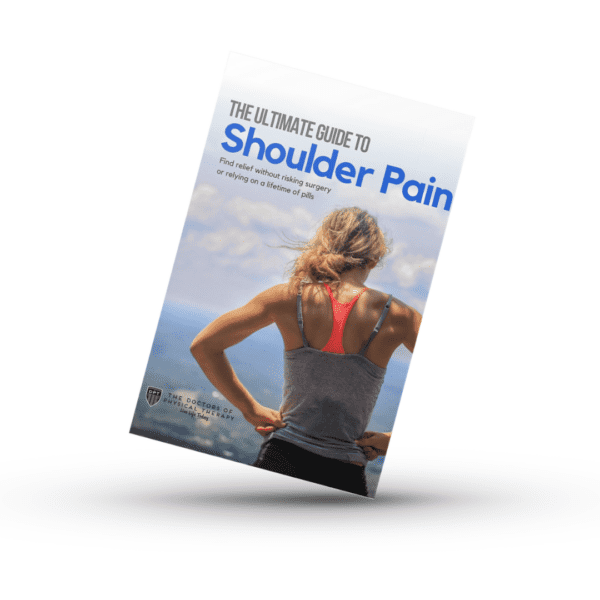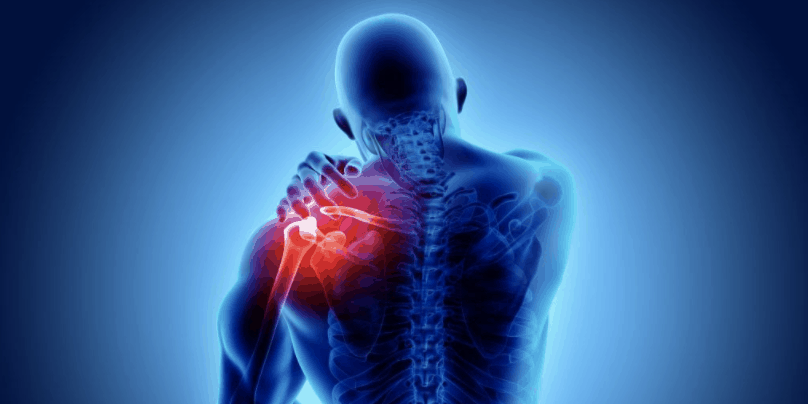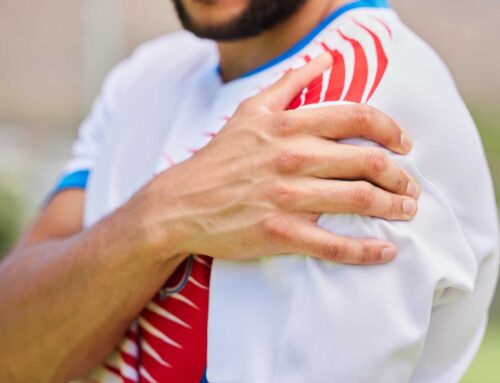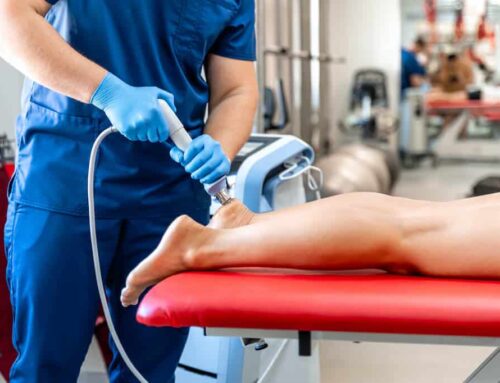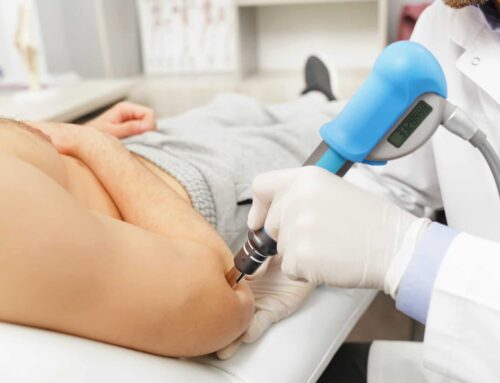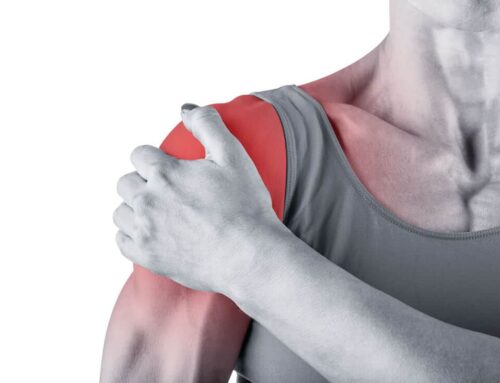The rotator cuff is a group of four muscles that hold your shoulder together at the joint. The muscles that make up your rotator cuff are responsible for keeping the bone called your humerus, tucked against your scapula (shoulder blade). These muscles are responsible for creating stability in your shoulder, which allows your bigger muscles to be used to lift and carry things.
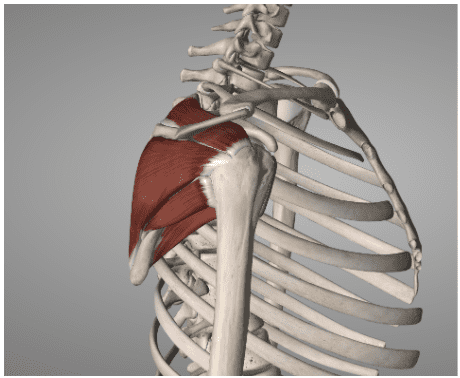
Image Credit to Essential Anatomy
Rotator cuff injuries are very common. When you’ve torn your rotator cuff, it often causes a dull ache in the shoulder, which gets worse as you move your arm out and away from your body. This can cause you to want to keep your shoulder close, but doing so for a long period of time could lead to other problems, such as frozen shoulder.
Why Do Rotator Cuffs Tear?
One of the things that confuses people about rotator cuff tears is, they happen gradually most of the time. It’s not one big moment that causes the tear, which can leave people feeling like they didn’t really do anything to explain their shoulder pain.
The most common cause is gradual wear and tear on the rotator cuff over time. This is often the result of repeated overhead work (like painters, mechanics), or people with very poor posture.
Gradually over time, there is wear and tear on a muscle called your supraspinatus, until it’s bad enough to give you pain. Once it starts giving you pain, it can make it hard to find a comfortable position to sleep or work in, and lifting quickly becomes painful.
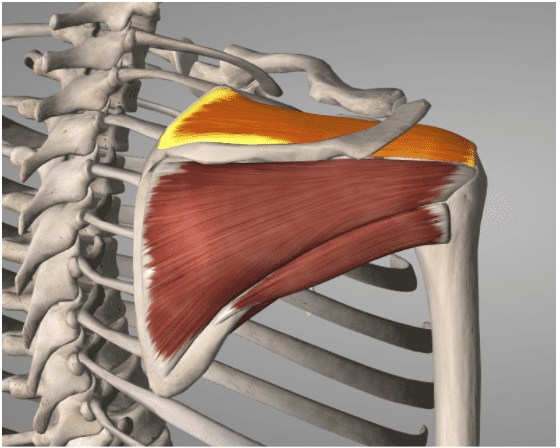
Supraspinatus muscle, highlighted in orange
Image Credit to Essential Anatomy
Other Symptoms
You may find these symptoms:
- Painful to sleep on your side (either one)
- Dull aching in the shoulder
- Difficult to put a belt on, or fasten a bra (reach your hand behind your back)
- Weakness
If your shoulder has started hurting as a result of an injury that happened in one moment, this is when you need to see a doctor right away.
Risk Factors For Rotator Cuff Tears
- Lots of overhead lifting
- Poor posture (rounded shoulders)
- A job that requires a lot of overhead reaching (carpenters, painters)
- Age. As you age, the muscles and tendons become more susceptible to tearing.
- Weakness. Weak rotator cuff muscles become victims of tearing over time.
- Muscular tightness. Tight, stiff muscles make it harder for the rotator cuff to work correctly.
Diagnosis and Treatment
Diagnosis for rotator cuff tears are typically done with physical examination. There are many tests that allow a doctor to be able to diagnose a rotator cuff tear.
To confirm the tear, or in the case that it’s suspected to be a large tear, imaging can be helpful, but in most cases it isn’t necessary. The types of images used to accurately diagnose a rotator cuff tear are:
- Ultrasound
- MRI
Treatment For Rotator Cuff Tears
Physical therapy is the #1 treatment for rotator cuff tears. A good physical therapist will not only help you get out of pain, but help you understand exactly why your rotator cuff has torn in the first place. This is important to help you be able to prevent the injury from happening again in the future. Your therapist may recommend one of the following:
If your tear is large enough, it may be an indication for surgery. In the case of small tears however, physical therapy will focus on relieving the tight muscles that contributed to the injury, and strengthening the weak ones.
What are the other options?
-
- Surgery: There are different surgical options available that repair the rotator cuff and the tendons.
- Injections: These can vary depending on where you get them done. The most common injection is steroids, which help with the pain, but can lead to long term tendon damage and weakening. This increases the chance of further tearing down the line.
What if I don’t Get Treatment?
If you don’t get treatment for rotator cuff tears, they can become bigger tears. “Houston, we have a problem.”
When the rotator cuff is torn, it creates instability (looseness) in the joint.
With the joint feeling loose, the body tightens other muscles around the shoulder. Over time, this causes grinding, and increases the chance of getting shoulder arthritis. When shoulder arthritis occurs, this significantly increases the likelihood of needing surgery.
When it comes to surgery, there are many surgeries designed to help with the rotator cuff pain, but one of the only ones that fixes the pain caused by arthritis is a shoulder replacement. These surgeries can be very limiting, and people can expect that nearly 50% of their range of motion will be gone forever following a shoulder replacement.
That’s why getting your shoulder treated early by an expert is so important. An expert physical therapist specializes in movement and can help you figure out what movements caused it and how to prevent it from happening again.
What Can I Do To Start Healing My Rotator Cuff?
Here are 4 things you can do.
- Stop sleeping on it. Start bracing your arm over a pillow when sleeping so that you cause less irritation. The more you irritate your shoulder the longer it will be painful.
- Make the decision to get help now. The longer you wait, and the longer you don’t move your arm freely, the more likely you will have long-term consequences.
- Don’t lift anything heavy for the time being. Heavy lifting can cause increased tearing.
- Get hands on specialized physical therapy treatment. Hands-on treatment by an expert physical therapist can help immediately improve your pain and range of motion.
How Can Working With An Expert Physical Therapist At DPT Help?
- You will get back range of motion and have less pain, often within a couple of treatments.
- You will sleep better through the night and have more energy throughout the day.
- Your treatment plan is tailored to your lifestyle to get you to be able to do the things that are most important to you.
- You’ll learn about the body, the muscles, your balance systems, and how everything is connected.
- You’ll understand how to take care of yourself so you can keep the injury from coming back.
If you’re ready to get back to a life where you don’t have to worry about shoulder pain & rotator cuff problems, and you can be as active as you like, click the button below to download our free shoulder pain guide by our shoulder specialists.
First image on this page credit to: Image By SHREDIFY.com
